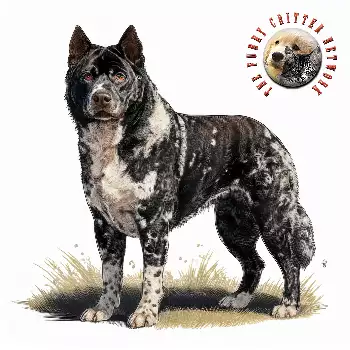The Mudi, pronounced like the English word moody, is known by relatively few alternative names compared to many other breeds, reflecting its concentrated development within Hungary and its relatively recent recognition on the international stage. The breed's official scientific designation is Canis Ovilis Fényesi, honoring Dr. Dezső Fényes, the Hungarian museum director credited with formally identifying and naming the breed in 1936. This Latin designation appears on official documentation and distinguishes the Mudi from other Hungarian herding breeds with which it shares historical roots and common ancestry.
In Hungarian, the plural form of Mudi is Mudik, though in English-speaking countries, the plurals Mudis or simply Mudi are both commonly used and accepted. The breed's name origin remains somewhat mysterious, as no definitive explanation has been discovered for why Dr. Fényes chose this particular designation. Some speculate the name may derive from regional Hungarian dialect, while others suggest it may have been coined specifically by Fényes without etymological precedent. The phonetic pronunciation guide commonly provided is moo-dee, helping newcomers correctly articulate this distinctive breed name.
The Mudi is sometimes informally referred to as the Hungarian Mudi or the driver dog, the latter name reflecting the breed's historical role in driving and controlling livestock on Hungarian farms. Unlike its better-known Hungarian cousins, the Puli and Pumi, the Mudi has not acquired numerous nicknames or regional variations in its name, perhaps due to its relative obscurity even within Hungary until recent decades. The breed was essentially unknown outside its native country until enthusiasts began importing specimens to North America and Western Europe in the early 2000s.
Within Hungary, the Mudi is recognized as one of the three traditional Hungarian herding breeds, alongside the corded Puli and the curly-coated Pumi. Before formal classification in the twentieth century, all three types were often grouped together under general designations for small Hungarian sheepdogs, with breeding occurring somewhat interchangeably based on working ability rather than distinct breed characteristics. The Mudi's distinguishing prick ears eventually became the primary feature separating it from its relatives during the formal breed classification process.
The breed gained recognition from the Fédération Cynologique Internationale in 1966, establishing its international status and providing a framework for consistent breeding standards across FCI member countries. More recent recognition by the American Kennel Club in 2022, the Canadian Kennel Club in 2020, and The Kennel Club of the United Kingdom in 2025 has introduced the breed to wider audiences in English-speaking countries, though it remains relatively rare with only a few thousand individuals estimated worldwide.

